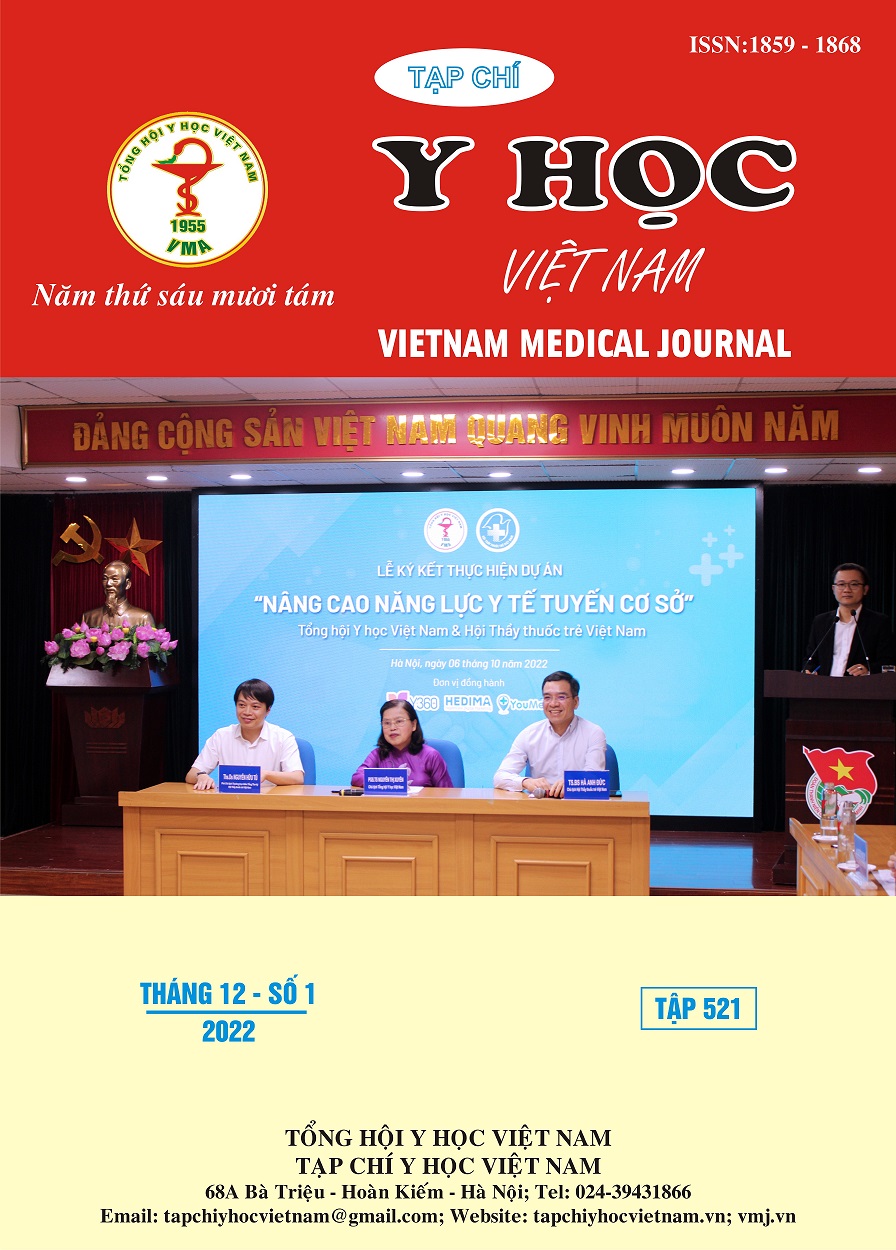COMPARISON AND EVALUATION OF MULTIPLEX PCR TECHNIQUE PROCESS OF THE IDENTIFICATION CANDIDA SPP. FROM PATIENT SAMPLES
Main Article Content
Abstract
Background: Although traditional methods of detecting species of Candida are easy to implement, the disadvantages are dependent on objective factors and are time-consuming. The simple methods that can quickly detect Candida spp. with high reliability, specificity, and especially, simultaneous detection of many pathogenic species in the patient samples being researched and developed – the multiplex PCR. Objectives: This study aimed to (1) Detect of 4 species of C. albicans, C. glabrata, C. tropicalis, and C. parapsilosis by multiplex PCR and traditional methods. (2) Compare and evaluate the process of detecting 4 species Candida spp. from patient samples by multiplex PCR technique. Method: Sample Candida spp. was admitted 3 hospitals in Ho Chi Minh city from October 2020 to May 2021. The fungus was detected by 3 methods: (1) Germ tube, (2) isolation on CHROMagar Candida medium, and (3) multiplex PCR technique. Then, compare the detection process of 4 species of Candida by multiplex PCR technique and detection method on CHROMagar Candida, based on sensitivity, specificity, positive predictive value, negative predictive value, repeatability, and accuracy. Results: Isolated on CHROMagar Candida medium: 186 isolates with the highest infection rate being C. albicans 112/186 (55.45%), C. tropicalis 39/186 (19.31%), C. glabrata or C. parapsilosis 35/189 (17.33%) and 16 samples suspected of not belonging Candida. Identification by multiplex PCR: 186 PCR products were detected, of which C. albicans 112/186 (55.45%), C. tropicalis 39/186 (19.31%), C. glabrata 25/ 186 (12.38%), C. parapsolosis 10/189 (4.59%) and 16 samples did not detect PCR products. Multiplex PCR procedure detected 4 species of Candida spp. The criteria were evaluated, and there were 5 satisfactory criteria according to the guidance of the Ministry of Health (2016): sensitivity (93.33%), specificity (100%), accuracy (96.19%), positive predictive value (100%), repeatability (pass), negative predictive value (66.67%) < 90%.
Article Details
Keywords
Candida spp.; Multiplex PCR.
References
2. Bộ Y Tế -Cục Y Tế Dự Phòng, (2016), Sổ tay xét nghiệm bệnh truyền nhiễm Tập 1, pp. 5-7.
3. Nguyễn Thị Hoài Thu, (2019), "Định danh Candida trên môi trường CHROMagar Candida ở người bệnh bị viêm quanh móng đến khám tại Bệnh viện Da Liễu Đà Nẵng", Tạp chí Y học Dự phòng, 29 (6), pp. 259.
4. Amy L. Leber, (2016), Clinical Microbiology Procedures Handbook, pp. 1303-1308.
5. Deorukhkar S. C, Roushani S, (2018), "Identification of Candida Species: Conventional Methods in the Era of Molecular Diagnosis", Identification of Candida Species: Conventional Methods in the Era of Molecular Diagnosis, 1 (1), pp. 1-6.
6. Kimura M, Araoka H, Yamamoto H, Asano-Mori Y, et al, (2017), "Clinical and Microbiological Characteristics of Breakthrough Candidemia in Allogeneic Hematopoietic Stem Cell Transplant Recipients in a Japanese Hospital. ", Antimicrob Agents Chemother, 61 (4), pp. pii: e01791-01716.
7. Singh A., Goering RV., Simjee S e a, (2006), "Application of Molecular Techniques to the Study of Hospital Infection", Clinical Microbiology Reviews, 19 (3), pp. 512-530.
8. Sobel JD, (2010), "Changing trends in the epidemiology of Candida bloodstream infections: a matter for concern", Crit Care Med, 38 (3), pp. 990-992.


